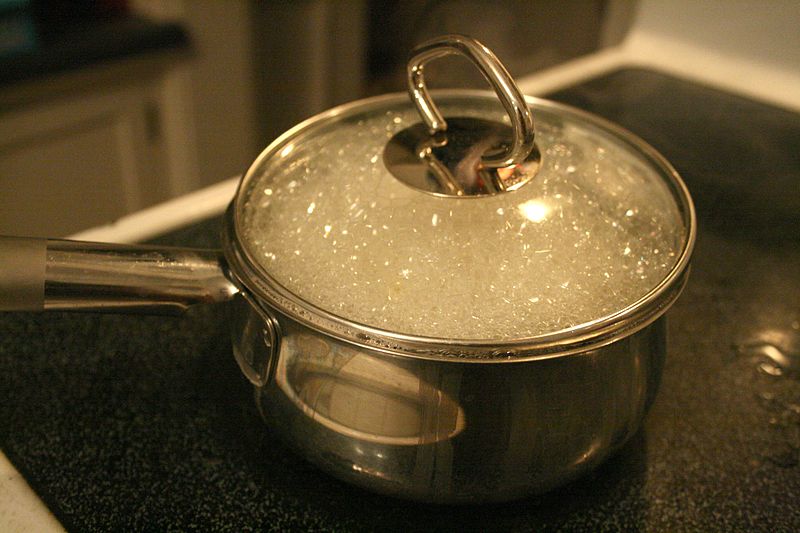The Indian cooking style is not really very friendly to nutrition. From chopping to deep frying, we tend to cook all the goodness out of food. There are, however, ways we can retain nutrition without compromising on taste. Here’s how to go about it.
Chop, chop
The usual process of preparing vegetables for cooking is to peel them all — even the ones that don’t need it — cut them into small pieces and soak in water. This removes dust, grime, pesticides and added colours. It also removes about 40 per cent of vitamins B and C.
“Proper cleaning is absolutely essential to get rid of toxic substances, even if you lose some nutrition in the process,” says skin specialist Dr Sanjay Ghosh. The added colours and pesticides are poisonous and can cause severe disorders. Dr Ghosh suggests that vegetables be washed thoroughly in running water or soaked before chopping so that the nutrition is not washed out along with pesticides. They should then be cut in large pieces and cooked quickly. Peeling vegetables is not necessary as peels have fibre and nutrition. “These fibres are good for people with diabetes, high cholesterol and too many fat deposits,” Dr Ghosh adds. Peel the vegetables thinly so that you can save some fibres and nutrition while getting rid of toxic chemicals.
Smoking hot
Most people cook in smoking hot oil but this process is incorrect. All cooking oils have a specific smoke point — the temperature at which oil molecules break apart and give off smoke. That is also when the beneficial fatty acids and vitamins go up in smoke and a host of harmful free radicals are produced. Free radicals cause inflammation that leads to high cholesterol, heart diseases, stroke, Alzheimer’s, cancer and many other disorders. Forget eating, even being exposed to this smoke while cooking is dangerous, especially for those who suffer from asthma and allergy.
To protect yourself, heat the empty pan first. Then pour in oil, heat for a few more minutes and add the ingredients before the oil gives off smoke. Cover the pan and cook on low heat.
Deep fried
Puri, kachauri, pakoras, chops — Indian cooking has an array of deep fried dishes. Regular consumption of them may lead to obesity, which is linked to high blood pressure, high cholesterol, diabetes, stroke and heart disease.
Apart from free radicals, smoking hot oil also produces trans-fats, which raise the level of bad cholesterol and the risk of cerebral stroke. If you recycle oil used for frying, you create aldehyde, an extremely harmful organic substance that leads to a host of disorders including Alzheimer’s and Parkinson’s disease. So should one throw away oil left over after deep frying? Well, it depends on the smoke point of the oil. Safflower, canola, mustard, sesame and coconut oil don’t disintegrate at moderately high temperatures. If you fry at moderate heat — and not extremely high heat — then you can reuse them. Strain the oil once cool to get rid of burnt particles (harmful organic substances) and recycle. But if the oil looks turbid instead of clear, throw it away.
Incidentally, coconut oil is one of those rare oils that has a high smoke point. This means you can safely use it for deep frying. Unfortunately, while popular in southern India, coconut oil is not accepted as a cooking medium in the rest of India.
“Choose shallow frying [like a paratha] over deep frying. This is not crispy but tastes good and the nutrition is preserved,” says nutritionist Vijaya Agarwala. “If you love crispy fries, get an air frier,” she suggests.
Cooking styles
Now let’s talk about cooking procedures and how they affect nutrition.
Boil: People think it is a healthy process even if the end product is bland. However, throwing away the water you boil in means losing 60 per cent of the nutrition of Vitamin B, Vitamin C and minerals. This is also true of rice. So boil things in just enough water and if there is any extra left, use it to make gravy.
Also, let the water boil first and then put in the rice, lentils or veggies. Always cook on a low fire, with a lid on the pan. You can also use a pressure cooker to boil food in.
Steam: This process of cooking retains the most nutrition. Vegetables such as tomato, carrot and broccoli become more nutritious when you steam them. If you saute the ingredients slightly and then steam them, the dish is tasty as well as healthy.
Poach: Poaching helps retain the nutrition of an egg. You can also poach thin slices of fish and some vegetables (such as carrots and capsicum).
Grill: You can grill vegetables, fish and meat but be careful not to char them. Any charred or blackened parts should be removed. Eating such parts can lead to cancer in the breast and pancreas as the process brings about harmful chemical changes in meat and chicken. Grill only the lean cut (low on fat) of meat or chicken.
Saute: The easiest way is to cook in the sauté mode on an induction cooker. You can even do it on low heat on a gas. Use olive oil for the best nutrition (especially anti-oxidants).
Microwave: Extensive research has shown that cooking in the microwave retains nutritive value but can make food dry. Sprinkle some water on the food before reheating it to keep it moist. However, never use a plastic or melamine vessel to reheat food in the microwave oven.











